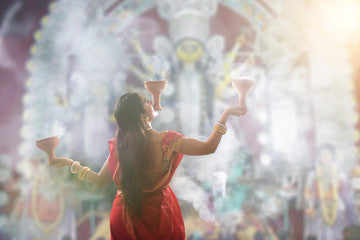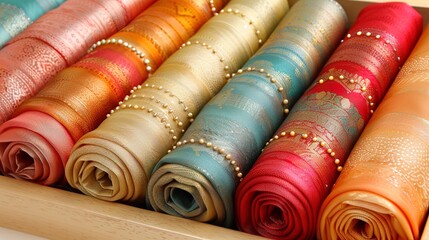The Evolution of Tant Saree Designs: From Traditional to Contemporary
Discover the vibrant journey of tant saree designs, a fabric so deeply intertwined with cultural heritage yet adapting to the rhythm of contemporary flair. This journey from the looms of traditional weavers to the avant-garde showcases of fashion ramps tells a rich story of innovation, tradition, and beauty.
Unraveling the History of Tant Sarees
The story of tant sarees begins in the Bengal region, where this lightweight fabric first made its mark. Woven from cotton, these sarees were designed to counter the hot and humid climate, offering comfort while also reflecting the wearer’s elegance. Historically, the art of weaving tant saree involved meticulous craftsmanship, a tradition handed down through generations. The designs often depicted motifs inspired by nature and daily life, encapsulating the essence of Bengali culture.
Tant sarees, through time, became an integral part of Bengali festivities and ceremonies, each design and weave telling its own tale. Such was the significance of these sarees that every region developed its unique style, recognizable by the characteristic patterns and motifs. This diversity in design is not merely a testament to the creativity of the weavers but also a reflection of the rich cultural tapestry of Bengal.
Traditional Tant Saree Designs and Their Significance
Traditional tant sarees are distinguished by their border and pallu designs, featuring intricate motifs that range from geometric patterns to floral and foliate designs. Integral to Bengali culture, these sarees carry with them stories of cultural identity, community, and the artisan’s craftsmanship. Each pattern woven into the saree is not just an aesthetic choice but a symbol with cultural and sometimes, religious significance.
The Craftsmanship Behind Tant Sarees
The making of a tant saree is a laborious process that showcases the remarkable skill and patience of the weavers. From sourcing the raw materials to weaving the fabric on handlooms, each step requires precision and dedication. The handloom weavers, using traditional techniques, infuse life into the sarees, ensuring each piece is unique. The craft of making tant sarees is an art form in itself, celebrated for its contribution to sustaining the cultural heritage and providing livelihood to many artisans.
Despite the advent of mechanization, the true essence of tant sarees lies in the traditional handloom weaving technique. This tactile connection to the cloth offers a sense of warmth and personal touch that machine-made fabrics cannot replicate. The beauty of these sarees is further enhanced by the eco-friendly dyes used, adding vibrant colors that reflect the vivacity of Indian festivals and customs.
Contemporary Trends in Tant Saree Designs
In recent years, tant sarees have seen a resurgence, blending traditional motifs with contemporary designs to appeal to the modern woman. Designers are experimenting with bold patterns, digital printing, and fusion draping styles to give the humble tant saree a modern makeover. This transformation has not only increased the popularity of tant sarees among the younger generation but has also opened new avenues for artisans to innovate while staying true to their roots.
The contemporary touch to the tant sarees also reflects in the choice of motifs. Modern motifs include abstract art, urban landscapes, and even personalized stories, making each saree a statement piece. Such innovations are a testament to the versatility of tant sarees and their ability to keep up with the times while preserving their essence.
The Future of Tant Sarees and Sustainable Fashion
As the world moves towards sustainable fashion, tant sarees stand out as an embodiment of eco-friendly attire. Made from natural fibers and requiring minimal energy in production compared to synthetic fabrics, tant sarees align with the principles of sustainability. Forward-thinking designers are now focusing on organic cotton and natural dyes, further solidifying the position of tant sarees in the sustainable fashion segment.
The future of tant sarees looks promising, with efforts being made to preserve this craft through innovation and sustainable practices. As consumers become more environmentally conscious, the demand for traditional yet sustainable fashion choices like the tant saree is set to rise. This indigenous attire, with its deep-rooted history and cultural significance, continues to adapt and flourish, promising a heritage that will be passed down through generations to come.
Weaving the Future of Tant Sarees
Tant sarees, with their breezy fabric and intricate designs, have traversed a long journey from being a symbol of cultural identity to becoming a statement of modern elegance. As we look towards the future, it’s clear that the tant saree will continue to evolve, embracing both sustainability and style, ensuring that this traditional attire will remain relevant and cherished in the years to come.






